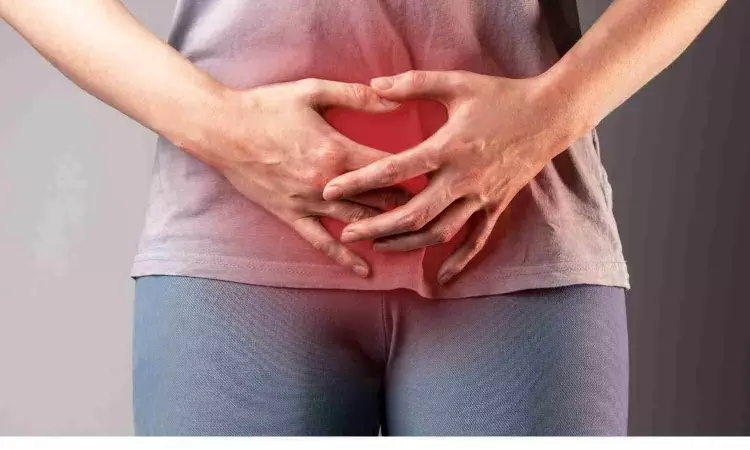- Home
- Medical news & Guidelines
- Anesthesiology
- Cardiology and CTVS
- Critical Care
- Dentistry
- Dermatology
- Diabetes and Endocrinology
- ENT
- Gastroenterology
- Medicine
- Nephrology
- Neurology
- Obstretics-Gynaecology
- Oncology
- Ophthalmology
- Orthopaedics
- Pediatrics-Neonatology
- Psychiatry
- Pulmonology
- Radiology
- Surgery
- Urology
- Laboratory Medicine
- Diet
- Nursing
- Paramedical
- Physiotherapy
- Health news
- Fact Check
- Bone Health Fact Check
- Brain Health Fact Check
- Cancer Related Fact Check
- Child Care Fact Check
- Dental and oral health fact check
- Diabetes and metabolic health fact check
- Diet and Nutrition Fact Check
- Eye and ENT Care Fact Check
- Fitness fact check
- Gut health fact check
- Heart health fact check
- Kidney health fact check
- Medical education fact check
- Men's health fact check
- Respiratory fact check
- Skin and hair care fact check
- Vaccine and Immunization fact check
- Women's health fact check
- AYUSH
- State News
- Andaman and Nicobar Islands
- Andhra Pradesh
- Arunachal Pradesh
- Assam
- Bihar
- Chandigarh
- Chattisgarh
- Dadra and Nagar Haveli
- Daman and Diu
- Delhi
- Goa
- Gujarat
- Haryana
- Himachal Pradesh
- Jammu & Kashmir
- Jharkhand
- Karnataka
- Kerala
- Ladakh
- Lakshadweep
- Madhya Pradesh
- Maharashtra
- Manipur
- Meghalaya
- Mizoram
- Nagaland
- Odisha
- Puducherry
- Punjab
- Rajasthan
- Sikkim
- Tamil Nadu
- Telangana
- Tripura
- Uttar Pradesh
- Uttrakhand
- West Bengal
- Medical Education
- Industry
General exercise as good as yoga for female urinary incontinence, reports study

Yoga has been recommended for years to treat or prevent health conditions that are associated with aging, such as urinary incontinence, but there's been little data to back it up.
Now a study led by UC San Francisco has found that pelvic floor yoga isn’t superior to a general exercise program at reducing urinary incontinence (UI) in older women. The researchers said that regular muscle stretching and strengthening exercises could improve UI symptoms almost as much as yoga.
The study published in Annals of Internal Medicine.
“The results suggest that women who pursue specialized training in pelvic yoga for their bladder problems could see similar improvements if they instead dedicated the same amount of time and effort to other, general physical conditioning exercise,” said first author Alison J. Huang, MD, a UCSF professor of Medicine, Epidemiology and Biostatistics, and Urology.
“Some women may still prefer yoga because of its other potential mind-body benefits,” she said. “But because yoga tends to require specialized instruction and props, it may be easier and less expensive to engage in other forms of physical activity or exercise.”
Urinary incontinence is a major issue for many older women
Studies have shown that urinary incontinence-the involuntary leaking of urine-is a common ailment affecting nearly half of midlife and older women. The condition can lead to depression, social isolation and functional decline.
Pelvic yoga, which has become popular among women of all ages, is designed to improve pelvic health problems such as incontinence, pelvic pain, or overactive bladder that can worsen due to childbirth, menopause or aging. But there’s been little rigorous research to evaluate its effectiveness, and many clinicians have been skeptical that yoga provides special benefits.
The LILA study (Lessening Incontinence through Low-Impact Activity) involved 240 women 45 to 90 in northern California who were experiencing urinary incontinence at least daily, were not using other treatments for incontinence, and not already participating in yoga or organized muscle strengthening activities.
They were randomly assigned for three months either to the pelvic yoga program of group classes twice a week and individual practice once a week, or to a physical conditioning program of general muscle stretching and strengthening with an equivalent amount of group classes and individual practice.
The authors found that women in the yoga group reported more than a 60% decrease in the average frequency of incontinence (from 3.6 episodes a day to less than 1.4 episodes). But women in the general conditioning program also reported nearly a 50% improvement in their symptoms.
The authors concluded that both groups experienced a clinically meaningful improvement in their incontinence, and that yoga was not clearly better, although it resulted in modestly greater improvement in some more specialized types of urinary symptoms.
“The results may provide support for a shift in thinking about treatment approaches for incontinence in older adults,” said Huang, who is also director of research in the Division of General Internal Medicine at UCSF Health. “Rather than focusing primarily on treatments that target the bladder or pelvic floor, perhaps we should focus on strategies that improve our overall physical function as we age.”
Reference:
Alison J. Huang, Michael Schembri, Harini Raghunathan, Wendy Berry Mendes,Efficacy of a Therapeutic Pelvic Yoga Program Versus a Physical Conditioning Program on Urinary Incontinence in Women: A Randomized Trial, Annals of Internal Medicine, https://doi.org/10.7326/M23-3051.
Dr Kamal Kant Kohli-MBBS, DTCD- a chest specialist with more than 30 years of practice and a flair for writing clinical articles, Dr Kamal Kant Kohli joined Medical Dialogues as a Chief Editor of Medical News. Besides writing articles, as an editor, he proofreads and verifies all the medical content published on Medical Dialogues including those coming from journals, studies,medical conferences,guidelines etc. Email: drkohli@medicaldialogues.in. Contact no. 011-43720751


